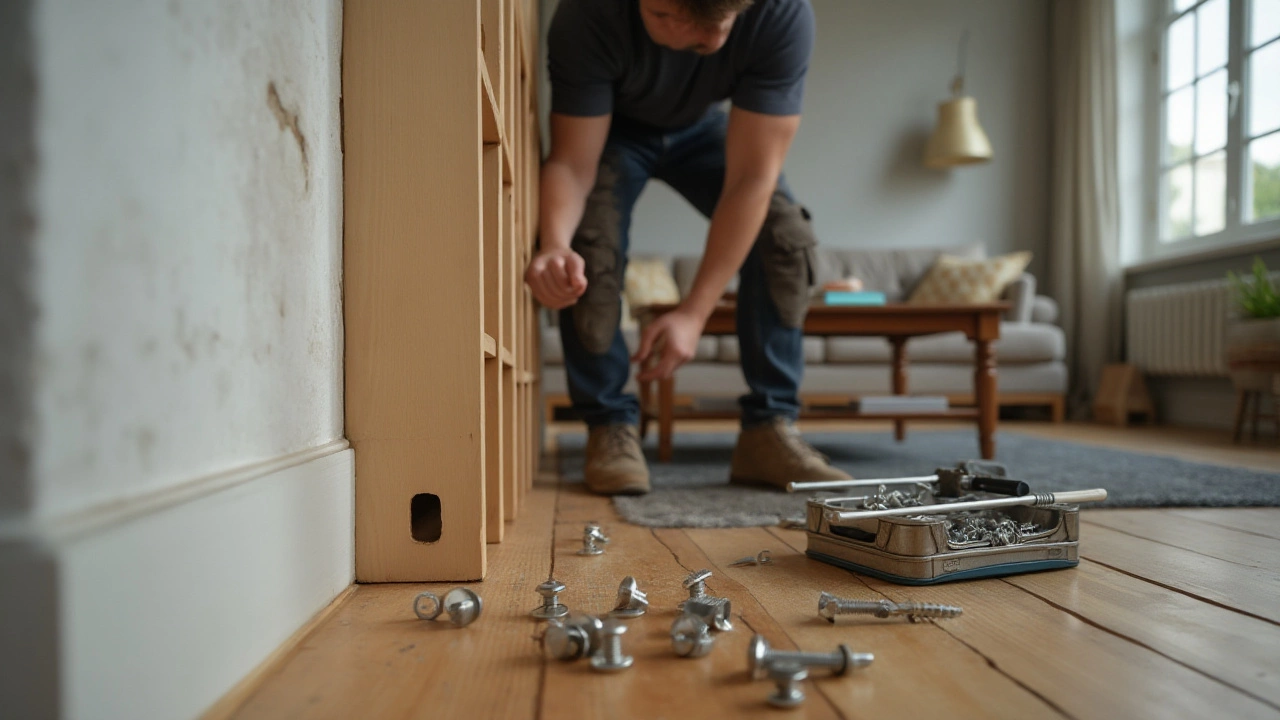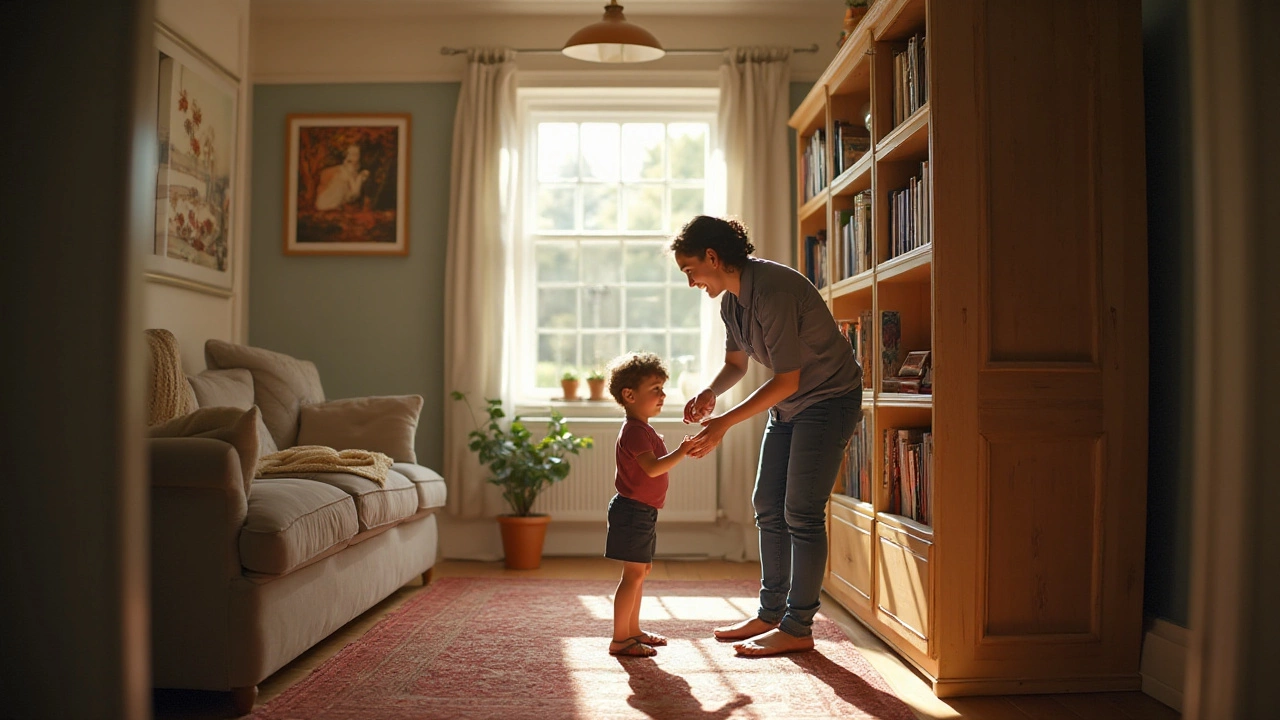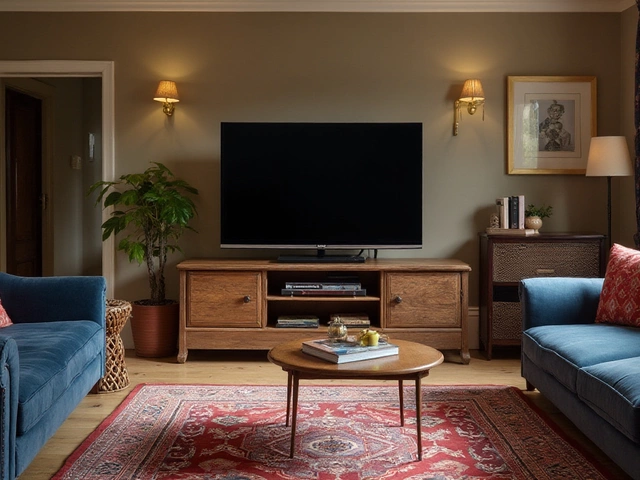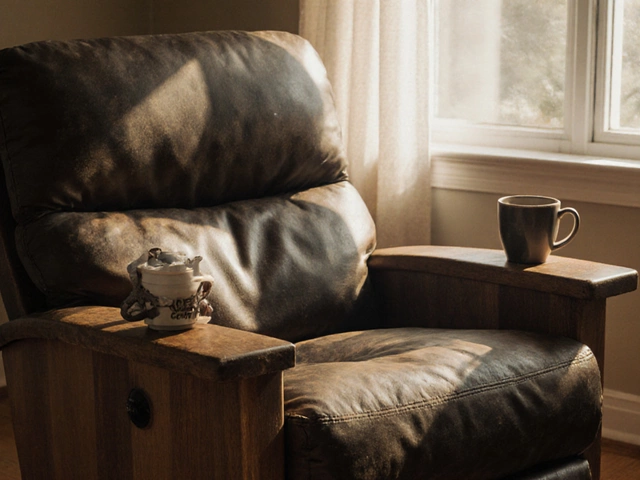A bookcase is more than just a piece of furniture; it's a home for your stories, your memories, and a testament to your tastes. Yet, its beauty and function can become a danger if not properly secured. Anchoring a bookcase prevents potential mishaps that could pose safety risks to your household, especially if you have active children or adventurous pets.
Understanding the types of anchors available and how to choose them is a key step in securing peace of mind. From anti-tip brackets that provide robust support to simple L-brackets for lighter shelves, the options vary but share a common goal: keeping your bookcase upright and safe. Each method comes with its own set of requirements—whether it’s the tools needed for installation or the compatibility with different wall types.
In this article, we will delve into practical advice and expert tips on selecting and installing these essential accessories, tailored to fit various home environments and bookcase styles. Discover how to enhance the safety of your living space while maintaining the aesthetic charm of your cherished book collection.
- The Importance of Anchoring Bookcases
- Types of Anchors for Bookcases
- Choosing the Right Anchor for Your Needs
- Installation Tips and Tricks
- Safety Considerations for Different Environments
- Maintaining Stability Over Time
The Importance of Anchoring Bookcases
Anchoring your bookcases is not just a precaution; it’s a necessary protocol for ensuring household safety. With varying weather conditions and the unpredictable antics of curious children and pets, a bookcase must stand firm. The importance of securing a bookcase goes beyond just aesthetics or tidiness; it’s about protecting life and preventing injuries caused by furniture tipping over. This is especially relevant in regions prone to earthquakes, where the ground's tremor can send large pieces of furniture toppling like dominos. In fact, according to the U.S. Consumer Product Safety Commission, thousands of injuries each year are attributed to furniture tip-over incidents, with children under five being disproportionately affected. Anchoring heavy furniture significantly reduces the chances of these life-threatening accidents.
But the danger isn’t confined to seismic activity. Everyday interactions such as a strong push, a nudge, or even the playful pull from a toddler can unbalance a bookcase that isn't secured. Bookcases, by design, offer top-heavy storage options, which naturally shift the weight upward. This can be a recipe for disaster in unsteady hands—or paws. The best bookcase anchors counteract this vulnerability by fastening the furniture directly to the wall, acting as a safeguard against unexpected movement. "Safety doesn’t happen by accident," notes National Safety Council’s Hugh Johnson, emphasizing the need for proactive measures in home safety setups. Such insights from experts reiterate that the small investment in time and materials for anchoring can pay off tremendously by preventing severe mishaps.
Moreover, these measures contribute to overall home wellness. A bookcase isn’t just a shelving unit; it’s an artistic assembly, reflecting personal stories and intellectual pursuits. Ensuring the library remains untouched by potential wreckage fosters peace of mind and continuity in sharing this curated journey with family and friends. While the up-front investment in installing anchors might seem daunting, especially in rented accommodations where permanent alterations are not ideal, modern solutions include removable yet strong adhesive anchors that leave no trace behind. These inventive solutions uphold the dual task of maintaining aesthetics while achieving complete home safety. Anchoring is indeed a wise choice for all bookcase owners aspiring to merge safety and beauty harmoniously.
Types of Anchors for Bookcases
When it comes to securing your beloved bookcase, choosing the right type of anchor is crucial. The market offers a variety of options, each designed to suit different needs depending on the size, weight, and placement of the bookcase. Let's delve into some popular anchor types and understand their unique characteristics and benefits.
Anti-Tip Safety Straps
Anti-tip safety straps are perhaps the most versatile solution for ensuring a secure bookcase. These straps are made of durable materials like nylon, and they work by tethering the furniture to the wall, preventing it from tipping over. This type of anchor is especially important in areas prone to earthquakes, and homes with curious children or pets who might bump or climb onto the bookcase. Not only do they provide a secure hold, but they are also quite easy to install with basic tools such as a drill and screwdriver. According to a Consumer Product Safety Commission report, between 2000 and 2020, nearly 460 deaths related to furniture tip-overs were recorded, underscoring the importance of such interventions.
L-Brackets
L-brackets offer a classic and simple solution for anchoring bookcases to the wall. These metal brackets run from the top of the bookcase to the wall, creating a sturdy and secure fit. They’re particularly suitable for smaller or medium-sized bookcases that aren’t heavily laden with items. An L-bracket anchor system works best when it is correctly aligned with a wall stud, ensuring a solid connection that can bear significant weight. Installation usually involves a stud finder, drill, screws, and a bit of patience. While not always the most discreet of fixture choices, L-brackets are a time-tested option for those who prioritize safety over aesthetic finish.
Wall Stud Anchors
Utilizing wall studs for anchoring is perhaps one of the most reliable methods for securing a secure bookcase. Wall studs provide a solid point of attachment for any anchor system, ensuring maximum stability. Typically, these are used in conjunction with L-brackets or anti-tip straps for added security. Locating a wall stud can be easily done with a stud finder, which is an inexpensive tool that's indispensable for DIY home projects. Once the stud is found, affixing the bookcase with screws directly into the wood provides a level of support that drywall alone cannot offer. This type of anchor is essential for larger bookcases that store heavy items like encyclopedias or multiple volumes.
Velcro Straps
For lighter bookcases, Velcro straps might suffice as an anchoring system. These are straightforward to apply and involve no drilling or wall damage, making them ideal for renters or individuals who like to rearrange furniture frequently. Although not as robust as metal brackets or dedicated safety straps, Velcro straps can provide a degree of safety for small, lightweight shelving units. It's important, however, to assess the weight capacity of these straps before relying on them for long-term safety and stability. The convenience of Velcro straps cannot be understated considering it only takes a minute to attach them securely.
When determining the best bookcase anchors for your needs, consider factors such as the size of your bookcase, the structure of your walls, and the specific safety needs of your household. No matter which option you choose, remember that anchoring is not just a recommendation; it's a necessity for avoiding unfortunate accidents and ensuring that your bookcase remains a beautiful and functional part of your home.

Choosing the Right Anchor for Your Needs
When it comes to selecting the perfect bookcase anchors, understanding the variety available is key. The choice depends not only on the style and weight of your bookcase but also on the type of walls where it will reside. Walls come in different materials like drywall, plaster, or masonry, and each requires specific anchoring solutions to ensure a secure fit. Becoming familiar with these options and their suitability can save you time and protect your cherished belongings.
Understanding Your Wall Requirements
First, identify your wall type as it will determine the kind of anchor you will need. For example, drywall is a common wall type in many homes, which typically requires anchors that can expand and maintain a firm grip within this softer material. Such anchors include toggle bolts or molly bolts, both designed to spread the load across a larger area, making them ideal for supporting heavy bookcases. In contrast, masonry walls, like those made of brick or concrete, will benefit from sleeve anchors or masonry screws, which are specifically designed to penetrate and hold in these harder surfaces.Considering the Bookcase’s Load
The next consideration is the weight and balance of your bookcase itself. A heavily laden bookcase needs more robust anchorage. An anti-tip bracket is an excellent choice here. These brackets are often adjustable and can be mounted either on the wall or the furniture itself. For lighter bookshelves, simple L-brackets may suffice. They are cost-effective and can be easily installed with standard tools. However, weighing your bookcase prior to purchase is crucial to avoid underestimating its required support. It is important to factor in not just the current weight but potential additions, such as when you come across new must-have editions at the local library sales.According to a report by the Consumer Product Safety Commission, "Between 2000 and 2018, there were over 400 fatalities involving tip-over incidents, underscoring the importance of choosing the right anchoring solutions for furniture and TVs alike."
Choosing the Right Bracket Type
Different types of brackets serve various purposes. While anti-tip brackets provide the best option for seismic zones, strap-mounted anchors provide flexibility for rearranging furniture without new wall holes. In households where style is as important as safety, decorative anchors can blend with the interior decor and remain discreet while performing their duty. These options offer protection without compromising on aesthetic values.Enhancing Safety and Longevity
A task often neglected is the regular checking of your anchors. Over time, with natural wear and tear or home renovations, the condition of your bookcase's supports may change. Biannual inspections can identify loose screws or brackets in need of replacement. Make it a habit to re-evaluate the weight distribution on your shelves, as improper stacking can add unintended stress points to your anchors. By maintaining a sensibly organized shelving setup, you enhance not only the safety but also the longevity of your setup.Choosing the right secure bookcase method is a blend of practicality and informed decision-making. Whether you're a DIY enthusiast or prefer hiring a professional, understanding how each anchor type functions in relation to your environment can greatly impact both safety and peace of mind. Each step, from identifying your wall type to understanding your furniture’s load capacity, contributes to a safer and more secure living space.
Installation Tips and Tricks
Let's face it, anchoring a bookcase might not sound like the most exciting DIY task, yet with the right approach, it can be straightforward and rewarding. Where should you start? First, understanding the wall structure is crucial. Check if the wall is drywall, brick, or plaster, as each requires different hardware for secure bookcase anchors. For instance, wall studs are the ideal anchoring point in drywall projects, offering the maximum hold and stability. Use a stud finder to locate these hidden heroes if working with drywall.
Once you've determined the wall type, gather the tools. A reliable drill is your best friend here, along with appropriate drill bits and wall anchors. Don't forget a level—ensuring that the bookcase stands straight is critical, not just for aesthetics but for home safety. Assembling your toolkit might take a bit of time, but being prepared will make the actual installation swift. As you prep, keep in mind that securing from the top of the bookcase is usually more effective than anchoring from the sides. This method reduces the chance of tipping significantly.
Now, moving on to measuring and marking the spots. Align your bracket or straps with the top shelf, ensuring it’s flush against the wall. Mark precisely where you'll drill, and do a double-check to avoid any misalignment. Accuracy is key here. And, a helpful trick for ensuring marks are level is to use painter's tape to create a 'mock shelf' line; it’s easy to adjust and can serve as a guide during drilling. Remember that the height at which you install the anchor can affect stability, so aim for high enough to prevent young ones from doing any unintended gymnastics.
Drilling and Fixing
With marks in place, it's time to drill. This part requires patience and care, especially with delicate wall types. Begin with a small pilot hole, which helps guide your anchor and prevents too much dust. If you’re using drywall anchors, tap them gently into place before screwing. For brick or plaster, masonry anchors are your go-to. These tougher anchors provide the firm grip needed against sturdier materials. As advice goes, tightening should be firm yet not overtight to avoid damaging the wall or the bookcase itself.
'A good DIY project is as much planning as it is execution,' advises Ethan Sinclair, a home improvement expert from 'Home & Garden Monthly.’ 'Take time to understand your surroundings and let your tools work for you.'
One often overlooked step is post-installation testing. After affixing your bookcase, give it a gentle nudge at various points to ensure it holds without wobbling. A pro-tip: place a heavy object on the bottom shelf to create a low center of gravity, adding another layer of stability. Also, consider routinely checking the anchor's integrity, especially if your collection grows or if you relocate the bookcase.
By following these installation tips and tricks, you not only improve home safety but also preserve the longevity of your treasured shelving unit. No longer just a storage solution, your bookcase becomes a sturdy, reliable feature in your home, standing tall with pride and security. This guide's investment in time and effort ensures peace of mind knowing your bookcase is not just a decoration, but a safe installation.

Safety Considerations for Different Environments
When it comes to anchoring your bookcase, the environment in which it resides plays a crucial role. Different households present unique challenges that can influence the best anchoring approach. For instance, homes with active children or pets require robust solutions to prevent curious little hands or paws from tipping over a bookcase. In such cases, using a combination of anti-tip brackets and wall studs can offer the most reliable security. These anchors essentially tether the furniture to the wall, thus greatly reducing the risk of tipping and potentially preventing injuries.
Consider the specific characteristics of the walls where your bookcase is located, as this can make a significant difference in the choice of anchors. Drywall, for example, may require additional reinforcement before an anchor can be applied effectively, which underscores the importance of knowing your home's construction. In a situation where traditional anchoring isn't feasible, such as in a rented apartment with strict rules on wall modifications, tension poles can serve as a non-invasive alternative, creating pressure between the ceiling and floor to hold the bookcase in place without the need for screws.
Another key factor is the bookcase material and its weight. Heavier bookcases naturally need more support compared to lighter ones. Therefore, anchors such as toggle bolts or heavy-duty metal brackets might be more suitable for heavier furniture. A surprising fact from a Consumer Product Safety Commission report highlights that thousands of furniture-related injuries occur each year, underscoring the necessity of thoroughly securing heavier items.
“Proper securing of furniture is a simple step that homeowners can take to significantly reduce the risk of accidents,” emphasizes Dr. Sarah Harris, a noted safety expert.
Temperature and climate within your living space can impact both the sturdiness of the bookcase and its anchor effectiveness. High humidity might affect wooden walls and anchor systems, causing them to warp or weaken over time. Thus, regular checks and maintenance of both the bookcase and its anchors are essential to ensure continued safety. Moldings or baseboards can also present challenges for furniture placement. In such cases, adjustable anchor mounts allow for alignment over uneven surfaces, maintaining stability.
The habit of rearranging rooms could lead to altered stress on your anchored bookcase. If you find yourself frequently rearranging your living space, opting for more flexible and easily adaptable anchoring solutions—such as removable adhesive brackets—can offer both safety and adaptability. For those interested in eco-friendly solutions, there are also options made from recycled materials which can provide the needed support while also being kind to the environment. Ensuring that these products meet safety standards is crucial, as improperly made anchors could provide a false sense of security.
Maintaining Stability Over Time
Keeping your bookcase stable over the long haul requires a tailored approach, one that considers the changing dynamics of your living space and the natural wear and tear on materials. The first step is regular inspections. A periodic check, perhaps every six months, ensures that the fixtures are still holding firm. Check if the anchors remain tightly secured to the wall and that no screws are loose or hinges slack. Expansion and contraction due to temperature changes might cause parts to loosen, but with a quick retightening, stability can be restored.
Adjustments may also be needed if the weight distribution on shelves changes significantly. A shelf laden with books today might accommodate a collection of decorative vases tomorrow, requiring reinforcement of the bookcase structure. If your bookcase wobbles when touched, redistribute the weight more evenly, placing heavier items on the bottom shelves to lower the center of gravity, which lends natural stability to your setup.
Environmental factors also play a role in long-term stability. Humidity and moisture can affect both the bookcase material and wall anchors. Wooden bookcases expand slightly in a humid environment, which might compromise their fit with wall brackets. This effect is less pronounced with metal or composite materials, but equally important to monitor. According to a study by the Woodworkers Institute, “consistently maintaining indoor humidity between 40% and 60% can significantly prolong the lifespan of your wooden furniture.”
Updating the anchors themselves is another strategy to consider. The advent of new materials and technology means there may be more effective solutions now than what was available when you first installed your bookcase. If your current bookcase anchors are older than a decade, it might be beneficial to research the latest in secure bookcase technology to employ improvements such as earthquake-proofing mounts, which offer enhanced restraint capabilities.
Consider the floor type beneath your bookcase as well. An area rug or carpet might compress over time under the weight of a loaded bookcase, subtly affecting its level and stability. Adjustable leg levelers can compensate for these subtle shifts, providing an inexpensive but effective way to maintain an even base under the heaviest loads. For those with an eye for legacy, family heirloom bookcases might mean extra caution is required to preserve not only the upright position but the integrality of the piece itself.
Another component of long-term stability maintenance is assessing for any unseen damage or vulnerability each time you move the bookcase, even slightly. Walls and floors experience wear differently and occasionally sustain impacts that aren’t immediately visible. Unseen cracks or splits could put your home safety at risk, without obvious outward signs. When detected early, small repairs can prevent the need for major fixes down the line. Treat each movement as a fresh installation, evaluating not only the bookcase but the surrounding environment that supports it.



